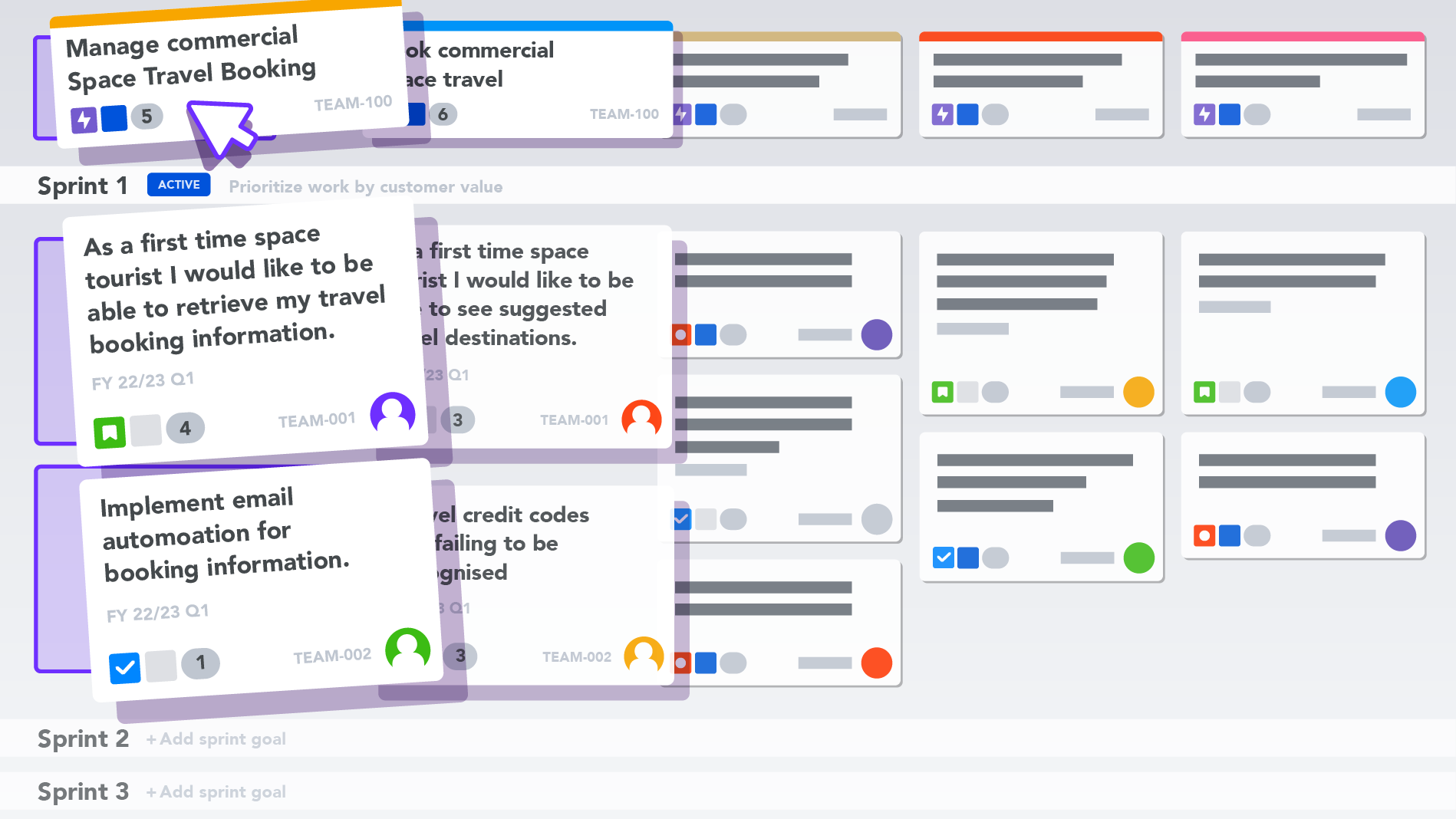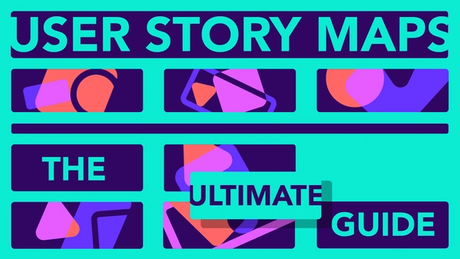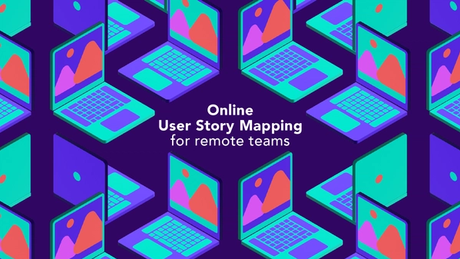
Resource
Lyft boosts velocity by 20% with digital user story maps
Why Lyft choose Easy Agile for their digital user story mapping.
Read moreUser story mapping is a visualisation and holistic understanding of the journey a customer takes with a product, from beginning to end. It includes all the tasks they’d typically complete as part of that journey. To expand on that, user story mapping takes all your user stories (across all your persona types) and assigns them to epics in the order that delivers the most value to the customer. From there, stories are prioritized and mapped to releases.
A team will collaboratively create a story map at the start of a project or product. It might be an entirely new product, or the product manager might want to pursue a new idea or feature as part of an existing product. Any team members responsible for the product experience should be involved.
So that I can commence work on a new feature, as a Product Manager, I want to be able to conduct a User Story Mapping exercise that maps the steps a user will take in my product when using this new feature.
The addition of a new product feature has raised the need for a User Story Mapping ceremony to outline the steps that a user would take with the new feature.
Hierarchy planning
Epic level planning
Issue level planning
Issue details
Filters and Views
TeamRhythm aims to support you from planning right through to review by facilitating sprint planning, backlog management, user story mapping, and team retrospectives in Jira.
TRY NOWResource
Why Lyft choose Easy Agile for their digital user story mapping.
Read moreResource
Get the The Ultimate Guide to User Story Maps for free. Complete with user story mapping definitions and steps, tools, examples, and tips for success.
Read moreResource
Remote user story mapping is quickly becoming the norm for agile teams. We cover 8 key considerations for a successful online user story mapping event.
Read more

